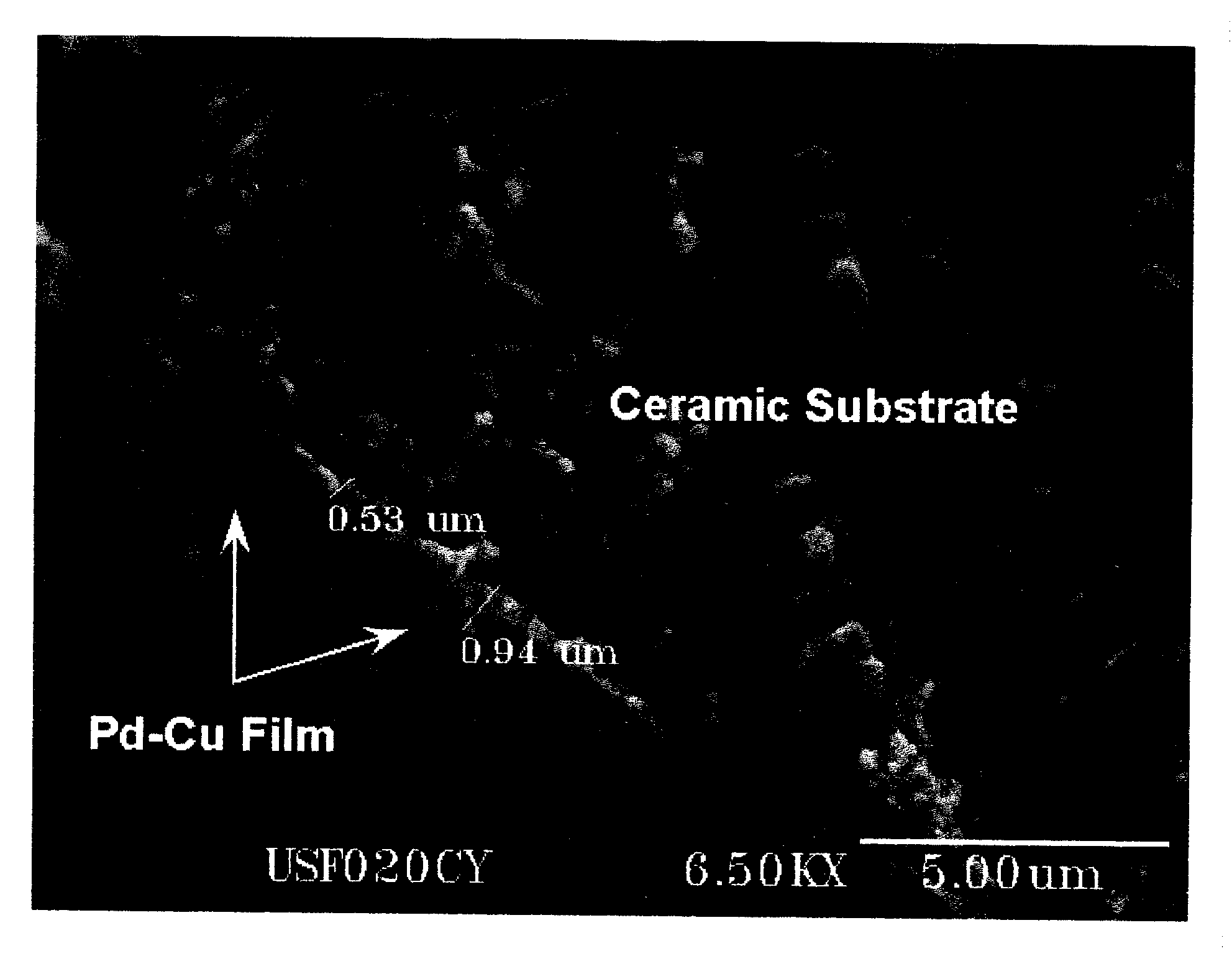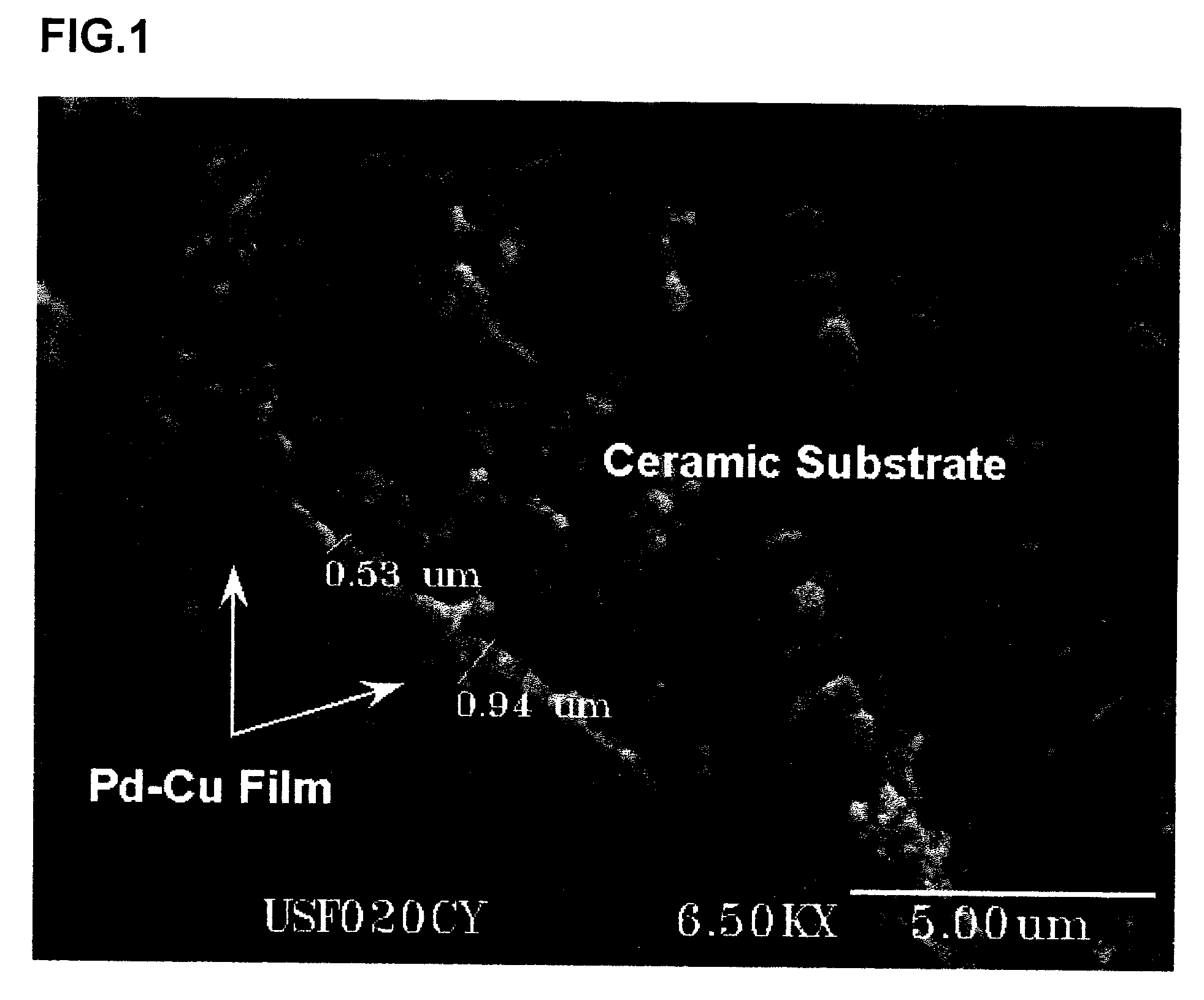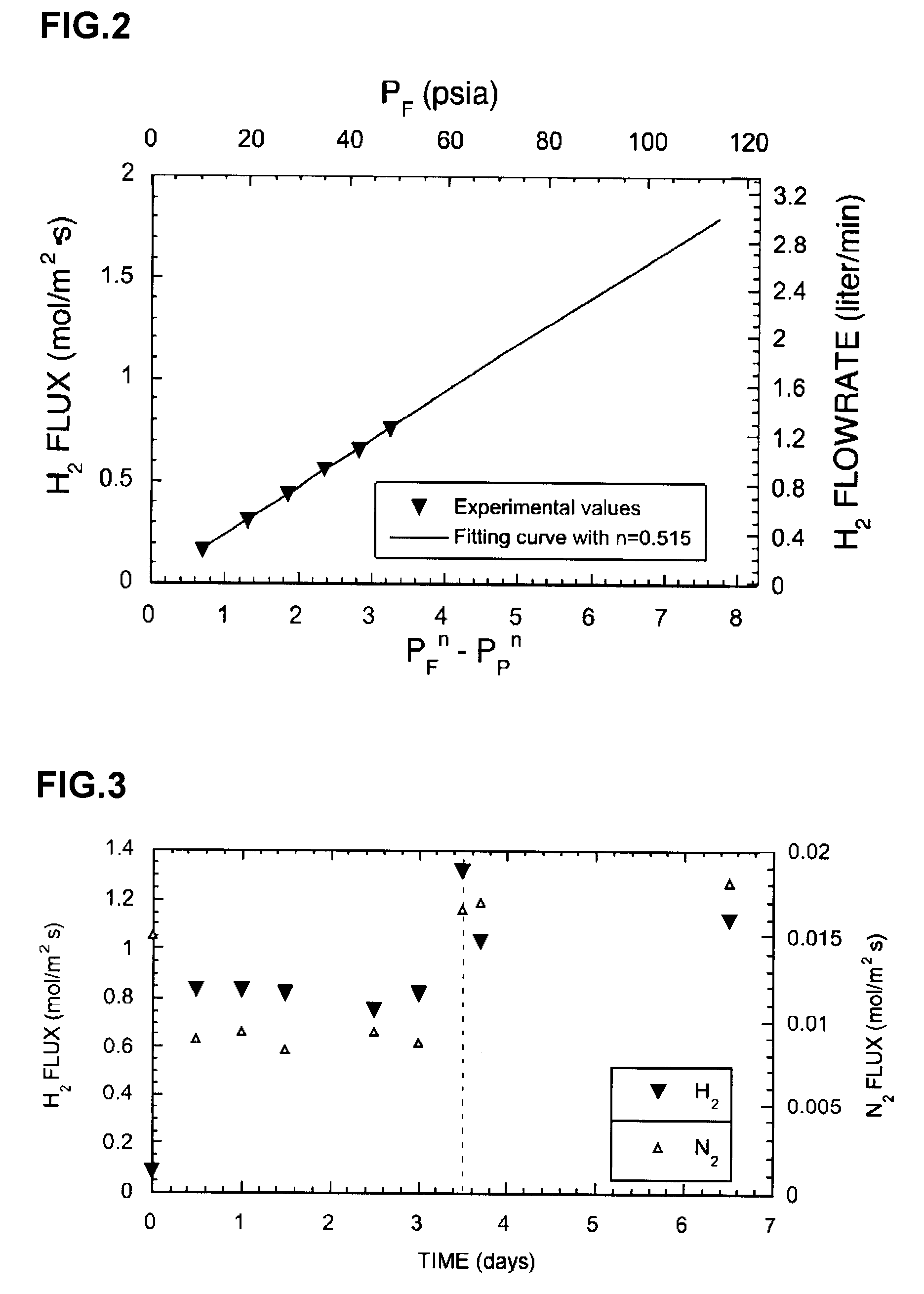Process for Preparing Palladium Alloy Composite Membranes for Use in Hydrogen Separation, Palladium Alloy Composite Membranes and Products Incorporating or Made from the Membranes
a technology of composite membranes and palladium alloys, which is applied in the field of process for fabricating palladium alloy composite membranes, the composite membranes and products incorporating or making such membranes, can solve the problems of poisoning of all these devices and the presence of poisoning problems, so as to improve the hydrogen flux of the membrane
- Summary
- Abstract
- Description
- Claims
- Application Information
AI Technical Summary
Benefits of technology
Problems solved by technology
Method used
Image
Examples
Embodiment Construction
[0040] The invention is directed, at least in part, to a process for fabricating a composite membrane comprised of a substrate and a Pd alloy film supported on the substrate. Before describing the process, some of the characteristics of Pd alloys that render them preferable to pure or substantially pure Pd, at least in some applications, are described. To begin with, the critical temperature for existence of the β phase hydride is lower in Pd alloys than in pure or substantially pure Pd. This significantly reduces membrane rupture due to warping or cracking, a failure that affects pure or substantially pure Pd members in applications involving temperature cycling. Many Pd alloys are also more permeable to hydrogen than pure or substantially pure Pd, including PdAg23, (compositions in wt. %), PdCu40, PdY7, and PdRu7. Further, Pd alloys containing Au or Cu are more resistant to sulfur compounds than pure or substantially pure Pd. Ternary and higher alloys of Pd are capable of providin...
PUM
 Login to View More
Login to View More Abstract
Description
Claims
Application Information
 Login to View More
Login to View More - R&D
- Intellectual Property
- Life Sciences
- Materials
- Tech Scout
- Unparalleled Data Quality
- Higher Quality Content
- 60% Fewer Hallucinations
Browse by: Latest US Patents, China's latest patents, Technical Efficacy Thesaurus, Application Domain, Technology Topic, Popular Technical Reports.
© 2025 PatSnap. All rights reserved.Legal|Privacy policy|Modern Slavery Act Transparency Statement|Sitemap|About US| Contact US: help@patsnap.com



